My shopping cart
Call us at 888-424-4602 or email us at info@tuesdaysnaturaldogcompany.com for questions about your order status.
Your cart is currently empty.
Continue ShoppingNatural dog chews are becoming one of the fastest growing categories in the retail pet supply store1. Does your store have a dedicated section for natural dog chews?


Stores with a strong selection of dog treats and chews will tend to see an overall increase in sales, because as customers spend more time perusing the aisle, they will be more likely to impulsively add extra dog supplies to their basket.
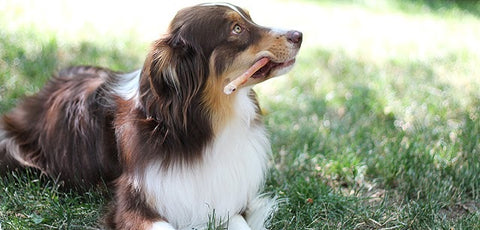

#1 Make sure customers can tell from far away that your display contains dog chews - use a large sign with easily readable font that says, “Dog Chew Bar” or “Treat Bar” or something similar.
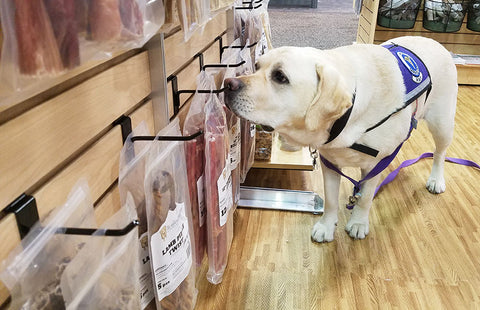
#2 Place some of the inexpensive chews closer to the ground so that customer dogs can easily investigate enticing smells.
#3 Keep the display in an area that gets a lot of foot traffic (such as close to a register, so that every customer who walks through your doors know that it’s there)
#4 Clearly display signage and pricing (many people are bashful to ask a sales associate for the cost of an item and this may create a barrier to customer purchases - don’t miss out on potential sales just because the pricing isn’t visibly posted!)
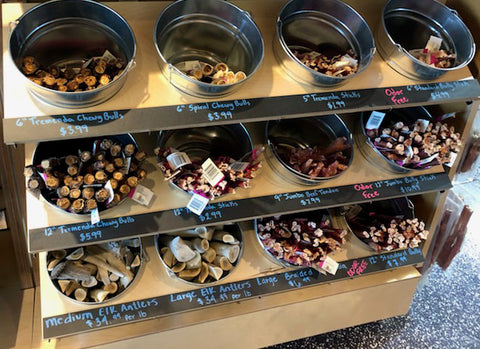
Because there is such a huge variety of dogs - everything from size, age, strength, personal dietary preferences, dietary restrictions, and health - you need to stock a selection of chews that can meet the needs of all the different dogs whose owners frequent your pet supply store.
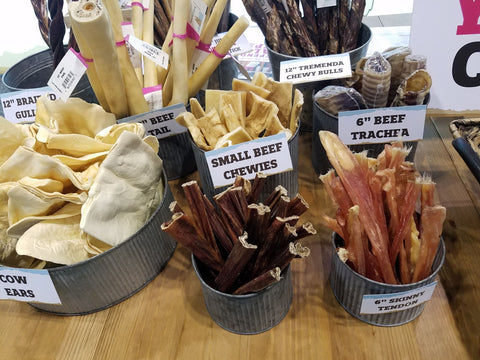
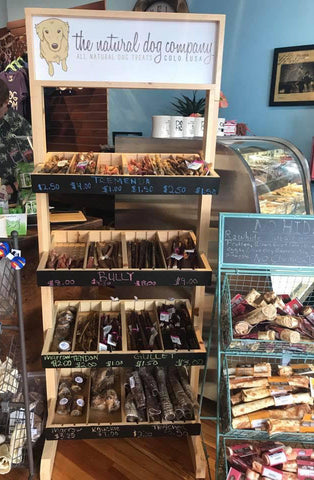
A vertical display is a space-saving option for those shops that need to maximize the usage of every square inch of space (the wooden display rack in this image is available to some of our retailers for free - contact us for more information). Taj Mutt Hal in Denver, CO, customized our rack with black chalkboard labels so that it matches with the rest of her store’s decor.
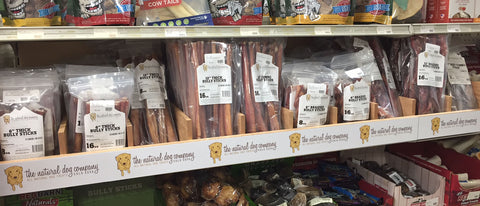
Keeping all of your products from a single brand on one shelf, and using signage to tie the display all together, will bring visibility to a brand you’re trying to promote (we worked with Pet Depot in Timonium, MD, to design a shelf strip based on their specifications).
If you’ve got the floor space, a large table with individual buckets will make an attractive display that can grab the attention of the majority of your dog-owning customers. This chew bar is one of the first things customers notice when walking into Pets Discount in Omaha, NE.
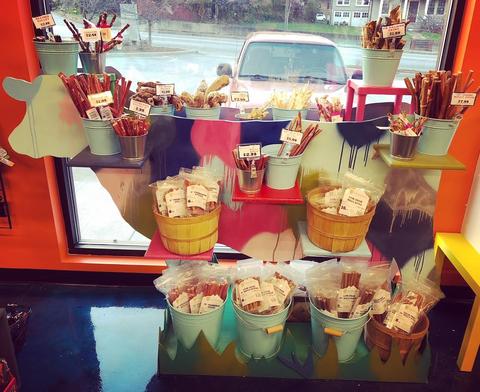
If you’ve got a certain aesthetic in mind, team up with a local artist to bring your vision to life! This custom-built treat display at Patton Ave Pet Company in Asheville, NC, is one of our favorites!
References:
1 ( https://www.petfoodindustry.com/articles/5232-trends-in-pet-treats )